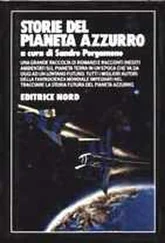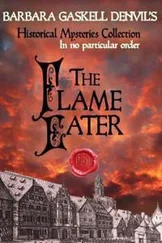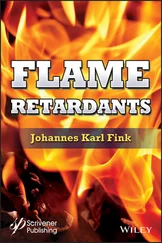Chemical regulation in Canada is governed by the Canadian Environmental Protection Act (CEPA) [53] as well as new substances/existing substance under its Chemical Management Plan. Flame retardant chemicals which are regulated under this law include brominated diphenyl ethers (BDPEs), hexabromocyclododecane (HBCD), and tetrabromobisphenol A. As per the law, new chemicals are investigated and added to the regulatory list as PBT data becomes available. Similar to laws in the US, known brominated flame retardants with known negative PBT profiles are banned from use and import into Canada. In 2019 Environment Canada stated that decebromo diphenylethane (DBDPE) may contribute to the formation of persistent, bioaccumulative, and inherently toxic transformation products, such as lower brominated BDPEs, in the environment. A ban on the manufacture, sale or import of the brominated FR DBDPE has been proposed (pending as of 2021-03). This is remarkable in so far as DBDPE has often been cited as an example of regrettable substitution, where a regulated substance (decabromodiphenylether, DBDE) is replaced by industry with a molecule that is just slightly modified, so evading the regulatory restriction whilst still having similar environmental properties.
The European Union (EU) has been at the forefront of chemical regulation for chemicals used in commerce. Relevant to flame retardant use, the Restriction of Hazardous Substances in Electrical and Electronic Equipment (RoHS) [4, 5] and Waste Electrical and Electronic Equipment (WEEE) [6, 7] laws have forced out the legacy brominated flame retardants PBDEs and PBBs from use. The newest chemical regulation which governs all chemicals, including non-halogenated, is the Registration, Evaluation, Authorisation and Restriction of Chemicals (REACH) [54]. REACH introduced the concept of Substances of Very High Concern (SVHC), based on PBT and CMR (carcinogenic, mutagenic and reprotoxic) properties. SVHC are supposed to be phased out and substituted unless there is authorization for specific uses. The following flame retardants are identified as SVHC or on the candidate list (as of 2021-03): Penta-, Octa- and DecaBDE, HBCD, Short chain chlorinated paraffins, Tris(2-chloroethyl) phosphate, Boric acid (toxic for reproduction) and Trixylyl phosphate. Since 2021, manufacturers of finished articles have to provide information on SVHCs in their products in a public database (SCIP, substances of concern in products) maintained by the European Chemicals Agency (ECHA).
Because commerce is global, REACH will likely affect flame retardant use in multiple countries, especially those which import to the EU, and export or manufacture within the EU. It is highly likely that as flame retardant chemicals with negative PBT profiles are found they will be banned or regulated under REACH, and this guidance will likely lead to other countries following suit for their own regulations. It is important to note here that the EU, as of the writing of this chapter, does have harmonized regulations across EU member states, but, there is some disagreement and discord between member states where a particular member state would want stricter or lesser regulation on chemicals. There is a long and deliberate mechanism in place in the EU to resolve these disputes, but the disputes can take years to address. Of final note, the United Kingdom has left the EU, but is still sorting out its regulations and commercial connections and collaborations with the EU. How UK independence will affect regulation of flame retardant chemicals in that country is not clear at this time.
There are many sovereign countries in Asia such that the potential regulations from country to country can be quite different. The three main markets with chemical regulations related to flame retardants are China, Japan, and Korea, but it is likely that other Asian countries have or will develop chemical regulations that also cover flame retardants.
China released its own version of RoHS in 2007 which is based upon the EU RoHS [55], but it only applies to imported materials, not exported electronics. It’s important to note that items exported from China to other parts of the world may have chemicals of concern that are banned from use in those countries. In the US for example, there have been several cases of imported goods from China containing chemicals (flame retardants and otherwise) that were banned from use in the US. There are even companies in China which produce flame retardants that are no longer produced in the US and EU because of their negative PBT profiles. It is unclear at this time how the China flame retardant regulations are enforced for domestic vs. export items, but local translation and guidance on Chinese environmental regulations is strongly recommended prior to selling into the Chinese market, or, getting exports of items potentially containing flame retardant chemicals from the Chinese market. An updated version of the China RoHS was issued in 2016, restricting the same six substances as the original EU RoHS. Products and parts that contain restricted substances exceeding limits can still be sold in China but need to be marked as such. A peculiar concept of China RoHS is the “Environment Friendly Use Period” (EFUP) designating the time before any of the RoHS substances might to leak out, causing possible harm to health and the environment. Every product that contains RoHS substances above the maximum permitted concentration is carries an orange circle label composed of two arrows containing a number that indicates the EFUP in years.
In Japan, the Ministry of Economy, Trade, and Industry manages the Chemical Substances Control Law (CSCL) [56] that would govern any use of flame retardant chemicals in that country, both in regards to manufacturing for domestic use and for export. The list of controlled chemicals on the CSCL is extensive, and does include some of the older flame retardants banned in the US and EU, such as brominated diphenyl ethers (BDPEs) and hexabromocyclododecane (HBCD) [57]. The CSCL and list of chemicals is updated from time to time and should be monitored for changes.
In South Korea (Republic of Korea), chemicals (including flame retardants) are governed by the Toxic Chemicals Control Act [58]. This act controls the manufacture and use of chemicals in Korea, and new chemicals introduced into commerce in this country as well as any new chemicals made domestically in South Korea. At the time of writing this chapter, gaining access to this list of chemicals in English was not possible for the author of this chapter, so it is unclear if flame retardants are on the list of controlled chemicals. However, given that this law conducts analyses of chemical safety similar to other countries which have banned HBCD, BDPEs, and various metals like Cd and Cr, it seems highly likely that flame retardants with known/established negative PBT profiles are regulated and banned from use in South Korea. Those selling into the South Korean market are encouraged to check the local regulations and see which chemistries are banned from use. Non-halogenated chemistries like red phosphorus may be limited in use in South Korea due to the potential for PH 3formation when red phosphorus is exposed to humidity (which can be avoided by encapsulation of the red phosphorus).
In July of 2020, Australia introduced a sweeping new regulation for chemicals called the Australian Industrial Chemicals Introduction Scheme (AICIS) [59]. This law looks at all chemicals imported into Australia, as well as those created/used domestically, and covers applications that use those chemicals as well. There is an extensive chemical inventory to see what is known about a particular chemical (and where there are gaps) in a searchable database, and a list of those chemicals which are banned/restricted from use. The Australian law looks to international law as a basis for chemical bans, including chemicals found on the Stockholm Convention of Persistent Organic Pollutants, which includes HBCD, BDPEs, and some perbrominated/perchlorinated aromatic compounds. Tris(2,3-dibromopropyl)phosphate is also subject to regulation due to its negative PBT profile. As of 2020, no other non-halogenated flame retardants are on the regulated list with Australia.
Читать дальше












